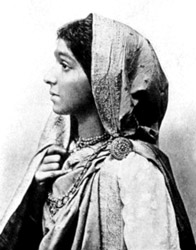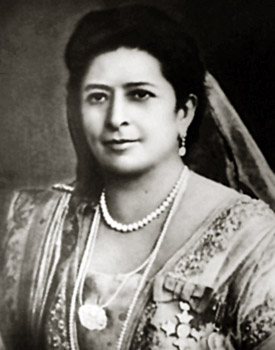 Purdah system or the Zenana system exists to a very large extent in India. The Zenana is simply the vernacular name for that part of the house which is occupied by the women; and the Purdah is that veil which divides the women`s quarters from the rest of the house. The lady who occupies the Zenana is a parda nashin, or one who sits behind the curtain. The Zenana system prevents men to see women. Even the head of the house and his sons are not allowed to see the ladies. The ladies do not come into public life; and the worst feature of the system is that their influence is confined to the family circle, and does not reach society. It reaches even the family circle only within the home; the ladies cannot directly influence the men outside the house.
Purdah system or the Zenana system exists to a very large extent in India. The Zenana is simply the vernacular name for that part of the house which is occupied by the women; and the Purdah is that veil which divides the women`s quarters from the rest of the house. The lady who occupies the Zenana is a parda nashin, or one who sits behind the curtain. The Zenana system prevents men to see women. Even the head of the house and his sons are not allowed to see the ladies. The ladies do not come into public life; and the worst feature of the system is that their influence is confined to the family circle, and does not reach society. It reaches even the family circle only within the home; the ladies cannot directly influence the men outside the house.
In some cases it goes even further, ladies themselves are not allowed into the Zenana of other ladies, unless they are very intimate friends. It must be ever remembered that the Zenana system is not in any way indicative of a low opinion of women, or of their want of influence. The system is not a part of the ancient Hindu life at all. It has been prevalent among Muslims. It is with the coming of the Mughals that Purdah system came into vogue.
The Purdah system, undoubtedly, sprang from an unworthy conception of the relations that ought to exist between the sexes. It owes its rise in great part at least to lawlessness, to dangers arising at a time when might was right, and to a jealousy of women, who did not take an equal place in family and social life, nor were regarded as fit to do so. It must not, however, be thought that, where the system is now practiced, these views of women necessarily exist. The times in which the system took its rise and laid its powerful grasp on the society of certain communities and of certain parts of India, have left behind them this survival of the distrust and anxiety by which they were characterised; and it is not easy in India to get rid of any system which has once laid hold of the popular mind.
 Interestingly an important feature of the Purdah or the Zenana system is that the women who are secluded under the Zenana system are in favour of that system as the men who are related to them. This is because they have been trained for generations to think that it is a mark of respectability and dignity.
Interestingly an important feature of the Purdah or the Zenana system is that the women who are secluded under the Zenana system are in favour of that system as the men who are related to them. This is because they have been trained for generations to think that it is a mark of respectability and dignity.
Strangely, some of the strongest supporters, male and female, of the purdah system object not only to the visits of men from outside, but even to the visiting of ladies amongst themselves, and to the reception by the purdah-nashin of European lady visitors, or even Indian ladies who do not belong to their family. No doubt this arises from an instinctive feeling that the influence of the system may be destroyed by the enlargement of view which arises from contact with the outer world in any form.
It can be said that the ladies who were secluded with the help of the zenana or the purdah system were far from unintelligent because from their seclusion, they administered affairs of very considerable importance.













